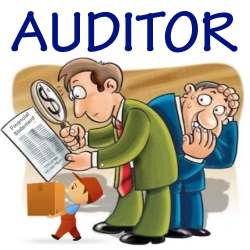Continuous audit | Advantages | Disadvantages | Steps for Effectiveness
Table of Contents
What is a Continuous Audit?
When the accounts are audited throughout the year by the audit staff under the guidance of the auditor, it is called continuous audit. The work involved in continuous audit is considerably high and the management requires the auditor to report at regular intervals.
If the number of financial transactions are very large and/or if the internal control system is found to be weak in certain areas, continuous audit is desired. Banks conduct continuous audit which is otherwise known as concurrent audit in big branches.
Advantages of Continuous Audit
1. The books are verified throughout the year, therefore accounts can be finalized immediately after the end of the financial year and statements of accounts can be presented to the shareholders, immediately thereafter.
2. The books can be extensively checked and mistakes can be rectified then and there.
3. The auditor can give useful suggestions to the management about the financial aspect, which can be implemented in the current period itself.
4. Periodical reports given by the auditor help the management in decision making. Continuous audit keeps the management informed of the profit position of the business. Thus, it helps in declaration of bonus, dividend and in deciding about the new investments.
5. Since the audit is conducted continuously, the audit can be carried on more effectively.
6. Continuous audit motivates the staff of the client and ensure proper maintenance of accounts.
Disadvantages of Continuous audit
1. Continuous audit involves heavy expenditure. The management has to pay high fees to the auditor, as the audit is performed throughout the year.
2. The auditor may not verify again the accounts relating to the period for which the verification is conducted earlier. A person who has access to the accounts may be tempted to tamper the accounts which are already verified.
3. The staff belonging to the client’s office might become careless in their work and excessively rely on the audit staff to find mistakes and errors in accounts.
4. Continuous audit is exhaustive. Sometimes, it becomes routine and unimaginative without serving any purpose.
5. The frequent visits of the audit staff will disrupt the work of client’s office. At any point of time, either the audit staff or the clients’ staff will be idle. If the books are not ready for verification, the audit staff will be idle. If the audit staff takes the books for verification, client’s staff might sit without work.
6. There is a possibility of fraud, due to collusion between the audit staff and the clients’ staff.
Steps to be taken to make continuous audit effective
1. The management should ensure that the books are not altered after the audit is completed. If necessary, any alteration can be made only after obtaining the approval of the auditor.
2. The auditor should use special ticks and marks during audit and the implication pf each mark should be kept confidential.
3. The audit notes, queries and remarks should be written date-wise and maintained. This will enable smooth flow of audit.

